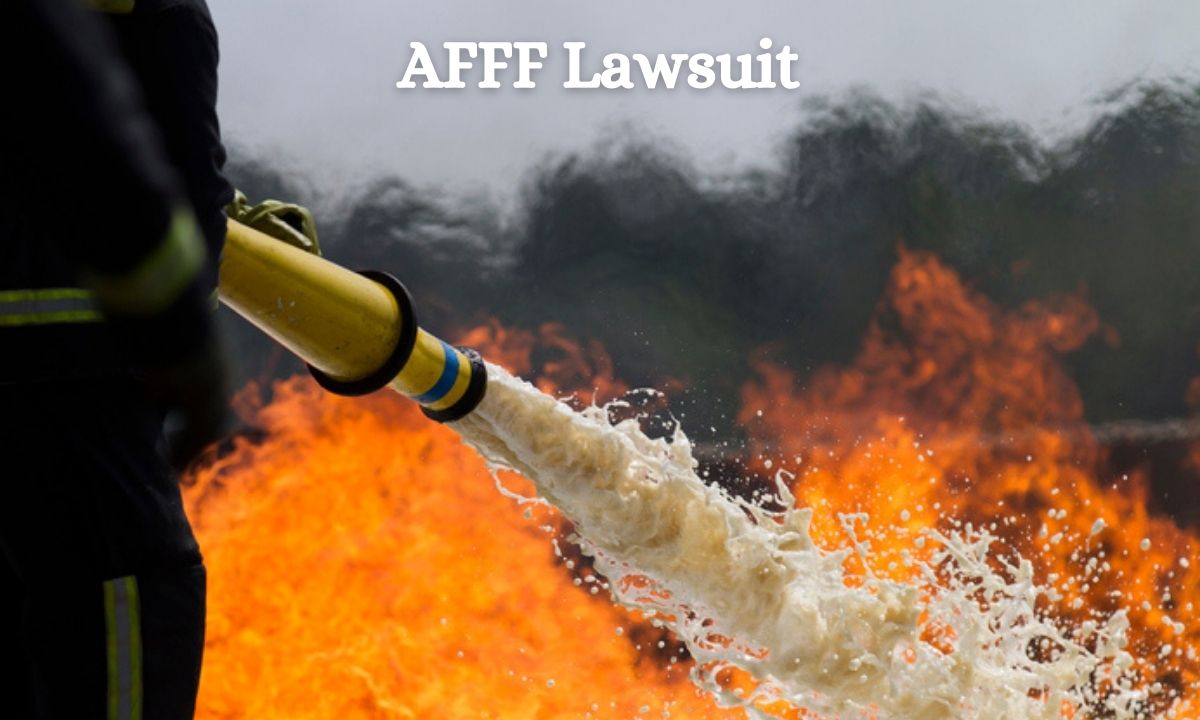Now Reading: Why More Than 5,000 AFFF Lawsuits Have Been Filed
-
01
Why More Than 5,000 AFFF Lawsuits Have Been Filed

Why More Than 5,000 AFFF Lawsuits Have Been Filed
Have you ever heard of AFFF, or Aqueous Film Forming Foam? This remarkable substance has been a staple in firefighting, especially for tackling tough blazes like oil and gasoline fires. However, in recent times, AFFF has become the center of a legal storm, with over 5,000 lawsuits filed against its manufacturers.
These cases highlight growing concerns about the foam’s safety and environmental impact. If you’re navigating this complex issue, it might be wise to contact an AFFF lawsuit attorney who can offer expert guidance in this specialized field.
Today, we’ll dive into the reasons behind this surge in AFFF-related lawsuits, shedding light on the controversies and consequences surrounding this once-trusted firefighting tool.
Background on AFFF
Aqueous Film Forming Foam (AFFF) is a unique firefighting agent designed to smother flammable liquid fires by forming a barrier between the fire and the air. Its key components include water, foam concentrate, and surfactants, creating a stable, heat-resistant blanket over flames.
Developed in the 1960s, AFFF was initially used on naval carriers to extinguish fuel fires. Its effectiveness soon led to its adoption in high-risk environments like airports and oil refineries, thanks to its rapid fire-suppressing capabilities.
The perception of AFFF has shifted significantly due to concerns about its chemical components, particularly PFAS (perfluoroalkyl and polyfluoroalkyl substances). These substances are known for their environmental persistence and potential health risks, leading to increased scrutiny and legal action against AFFF use.
Health and Environmental Concerns
A critical concern with AFFF is its connection to PFAS, or perfluoroalkyl and polyfluoroalkyl substances. These chemicals, often called “forever chemicals,” are a defining component of AFFF due to their ability to resist heat and repel oil and water. However, their persistence in the environment and human bodies has raised significant health and ecological alarms.
Exposure to PFAS, commonly found in AFFF, has been linked to various health issues. Key risks include:
- Increased cholesterol levels
- Changes in liver enzymes
- Increased risk of thyroid disease
- Decreased vaccine response in children
- Increased risk of high blood pressure or pre-eclampsia in pregnant women
- Developmental effects or delays in children
- Increased risk of certain cancers, particularly kidney and testicular cancers
The environmental impact of AFFF, mainly due to PFAS, is widespread and concerning. These chemicals can seep into groundwater, rivers, and soil, leading to:
- Long-term contamination of drinking water sources
- Disruption of aquatic ecosystems and wildlife
- Accumulation in the soil, affecting agricultural products and natural vegetation
- Potential bioaccumulation in fish and wildlife, posing risks to animal health and those who consume them
Legal Landscape and Key Lawsuits
The legal battles over AFFF are marked by a series of significant lawsuits, many leading to impactful outcomes. One of the most notable is the Multi-District Litigation (MDL), which consolidates over 5,000 individual lawsuits primarily against major AFFF manufacturers.
These cases often focus on the manufacturers’ alleged failure to warn about the risks of AFFF and the contamination of drinking water. In addition, some manufacturers have faced substantial financial settlements. For example, a landmark case saw a major manufacturer agree to a multimillion-dollar settlement to resolve accusations of environmental contamination.
Role of Regulatory Bodies (EPA, FDA) in Addressing AFFF Concerns
The role of regulatory bodies like the Environmental Protection Agency (EPA) and the Food and Drug Administration (FDA) is pivotal in the AFFF controversy. The EPA has been actively involved in assessing the environmental impact of PFAS and developing guidelines for cleanup and regulation.
Although the FDA’s role is less direct, its regulations on chemicals in consumer products indirectly affect the use and disposal of AFFF.
Analysis of Legal Arguments Used in AFFF Lawsuits
The legal arguments in AFFF lawsuits typically center around negligence and failure to warn, product liability, and environmental damage. Plaintiffs often argue that AFFF manufacturers knew or should have known about the dangers of PFAS and failed to warn users adequately.
They also claim that AFFF products are inherently dangerous and defective due to their PFAS content, leading to environmental damage and a host of ecological and health damages.
Who is Filing These Lawsuits and Why?
The plaintiffs in the AFFF lawsuits come from diverse backgrounds, yet they share common concerns about exposure to harmful chemicals. Key groups include:
- Firefighters: Often at the forefront, firefighters have been regularly exposed to AFFF in their line of duty, leading to concerns about increased health risks.
- Residents in Affected Areas: People living near military bases, airports, and industrial sites where AFFF was frequently used are also filing lawsuits and are worried about contaminated water supplies and related health issues.
- Workers in Relevant Industries: Employees in sectors where AFFF is commonly used, such as aviation and petroleum, are also among the plaintiffs.
The Role of Class-Action Lawsuits in the AFFF Legal Battle
Class-action lawsuits have been a significant aspect of the AFFF legal battle. These collective actions enable groups of people similarly affected by AFFF to pool their resources, making it easier to take on large manufacturers. They also help highlight widespread issues and draw attention to the need for regulatory changes and better safety practices.
Final Thoughts
Over 5,000 AFFF lawsuits highlight a critical juncture where public health and environmental safety intersect with industrial innovation. These legal actions, driven by the harmful impacts of PFAS in AFFF, reflect deep concerns over health risks and environmental damage.
Plaintiffs, ranging from firefighters to residents near contaminated sites, underscore the urgent need to balance technological advancement and safety. This situation is a stark reminder of the importance of prioritizing human health and environmental integrity in the face of progress.
It calls for more stringent safety measures, transparent risk communication, and a commitment to sustainable innovation. Ultimately, the AFFF lawsuits teach us that actual progress is not just about advancing technology but also about ensuring the well-being of people and the planet.










